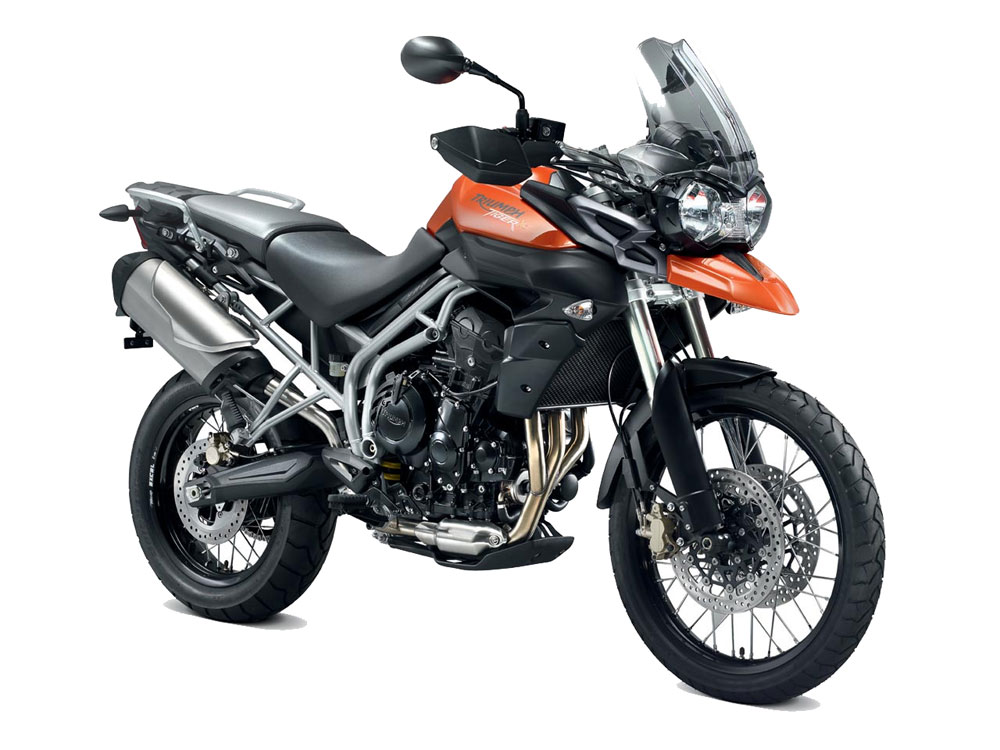
A Triumphant Adventure: Nothing like 450km in one day to get to know a motorcycle. That’s what we did on the Triumph Tiger 800XC
Story by Shane Booth | Photography by Damien Ashenhurst
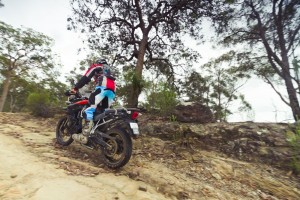
The Triumph Tiger 800XC was born only a few years back in 2010 and in that short time it has become a known entity in the mid-size adventure bike scene. Emerging from such an iconic motorcycle brand that has been associated with names like McQueen and Brando in the past, the Tiger 800XC demands instant attention, whether you like it or not. Plenty of sharp lines and angles give the bike an aggressive, rugged look which drew unanimous praise from the crew on our ride. There doesn’t seem to be anything on this bike that doesn’t need to be there, which makes it look about as slim and nimble as a 215kg adventure bike can look. It also means there are fewer bits of bodywork and accessories that can break off or be damaged when you head off road.
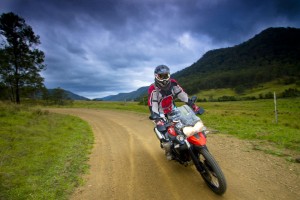
Seat Time
We spent around 11 hours on the bike, travelling over 450km on our regular DIRT ACTION adventure bike loop. Of the 450km, around 175 of those are on the bitumen while the remainder varies from full-width gravel fire roads to some tight single-track. The off-road surface varies from gravel to clay and includes some sandy sections, too. It’s a great ride that allows us to spend some quality time on the bike while dealing with just about every type of terrain most riders will attack on an adventure bike.
The Tiger is a comfortable bike that made a day of riding like that no real issue. The seat is comfortable and when you have the opportunity to spend time sitting down it’s a relaxing upright position. The windscreen does just enough too divert the majority of air away from your face when you hit faster sections and a slight dip of the head will get you out of the turbulence almost completely. Personally, I would prefer a screen of this size that doesn’t get in the way when standing on the bike, especially when you need to lean forward on an uphill section.
Speaking of standing up, that’s no problem on the Tiger, either. I find I spend the majority of my time on an adventure bike in the standing position so it’s an important part of the bike for me. When you stand up, the bike feels slim between your knees and the handlebars are in a comfortable position that doesn’t require you to bend forward too much.
The handlebars themselves are a comfortable bend and the position in the clamps is adjustable as far as rotating them forward or backwards for personal preference. The seat height is also adjustable between two positions: 845mm or 865mm, depending on how long your getaway sticks are.
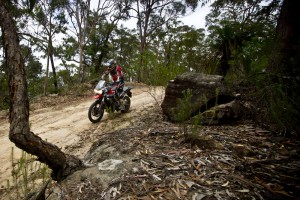
Performance
The Tiger features a liquid-cooled, DOHC, 12-valve in-line three-cylinder 799cc engine. What does all that mean? It means it’s a great-sounding donk that produces a smooth but solid amount of power at low rpm. Feed it a few gears and it cruises along at higher speeds easily. This engine has some torquey punch early on which makes it a lot of fun to ride; it also allows you to ride it in the low-rpm range which helps control traction off road.
Suspension performance up front is handled by adjustable Showa 45mm upside-down forks that offer 220mm of travel. They are paired with a Showa rear shock that offers 215mm of travel, adjustable pre-load and rebound damping.
Stopping power is provided by twin 308mm floating front discs and a single 255mm disc on the rear. ABS is an option and can be switched off if required. The front brakes on the Tiger were powerful enough but required a fair amount of lever pressure to produce that power. If there was a slight weakness with this bike, this would be my pick.
The Tiger also features 650W generator allowing you to wire in any electrical accessories like GPS and phone or radio chargers without any problems.
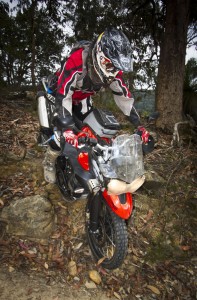
In The End
The Triumph Tiger 800XC is a great adventure bike that may not have all the bells and whistles of some of its competitors but can do a very good job of taking a rider just about anywhere. The fact that it’s without some of the electronic assistance you’ll find on other machines makes this bike a little more raw, but in a good way. The engine is great; it handles well and is very much a rider’s machine, especially when you leave the black stuff.
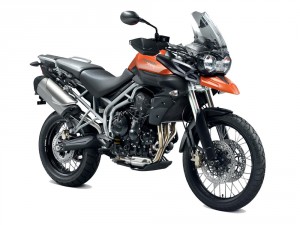
Specs: TRIUMPH TIGER 800XC
Engine & transmission: Liquid-cooled, 12-valve, DOHC, in-line three cylinder
Capacity: 800cc
Bore/stroke: 74.0 × 61.9mm
Fuel system: Multipoint sequential electronic fuel injection
Exhaust: Stainless steel 3 into 1, high level stainless steel silencer
Final drive: O-ring chain
Clutch: Wet, multi-plate
Gearbox: 6-speed
Oil capacity: 3.7L (1 US gal)
Frame: Tubular steel trellis frame
Swingarm: Twin-sided, cast-aluminium alloy
Front wheel: 36-spoke 21 × 2.5in, aluminium rim
Rear wheel: 32-spoke 17 × 4.25in, aluminium rim
Front tyre: 90/90 ZR 21
Rear tyre: 150/70 ZR 17
Front forks: Showa 45mm upside-down forks, 220mm travel
Rear shock: Showa monoshock with remote oil reservoir, hydraulically adjustable preload, rebound damping adjustment, 215mm rear-wheel travel
Front brake: Twin 308mm floating discs, Nissin 2-piston floating calipers, (ABS model available)
Rear brake: Single 255mm disc, Nissin single piston floating caliper, (ABS model available)
Instrument display/functions: LCD multi-functional instrument pack with digital speedometer, trip computer, analogue tachometer, gear position indicator, fuel gauge, service indicator, switchable ABS and clock
Length: 2215mm (87.1in)
Width (handlebars): 865mm
Height (without mirrors): 1390mm
Seat height: 845mm–865mm
Wheelbase: 1545mm
Rake/trail: 24.3°/95.3mm
Fuel tank capacity: 19L
Wet weight (ready to ride): 215kg
Performance (measured at crankshaft to 95/1/EC):
Maximum power: 95PS/94bhp/70 kW @ 9300rpm
Maximum torque: 79Nm/58lft-lb @ 7850rpm

